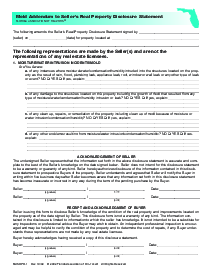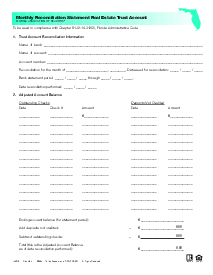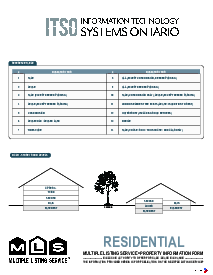-
Templates
1099 FormsAccurately report 1099 information returns and ensure IRS filing with easeExplore all templatesW-9 W-8 FormsEasily manage and share taxpayer details to streamline payments and meet IRS requirements with confidenceExplore all templatesOther Tax FormsFillable tax forms simplify and speed up your tax filing process and aid with recordkeeping.Explore all templatesReal EstateReal estate templates for all cases, from sale to rentals, save you a lot of time and effort.Explore all templatesLogisticsSimplify your trucking and logistics paperwork with our ready-to-use transportation and freight templates.Explore all templatesMedicalMedical forms help you keep patient documentation organized and secure.Explore all templatesBill of SaleBill of Sale templates streamline the transfer of ownership with clarity and protection.Explore all templatesContractsVarious contract templates ensure efficient and clear legal transactions.Explore all templatesEducationEducational forms and templates enhance the learning experience and student management.Explore all templates
-
Features
FeaturesAI-Enhanced Document Solutions for Contractor-Client Success and IRS ComplianceExplore all featuresAI Summarizer Check out the featureAI PDF summarizer makes your document workflow even faster. Ask AI to summarize PDF, assist you with tax forms, complete assignments, and more using just one tool.Sign PDF Check out the featurePDFLiner gives the opportunity to sign documents online, save them, send at once by email or print. Register now, upload your document and e-sign it onlineFill Out PDF Check out the featurePDFLiner provides different tools for filling in PDF forms. All you need is to register, upload the necessary document and start filling it out.Draw on a PDF Check out the featureDraw lines, circles, and other drawings on PDF using tools of PDFLiner online. Streamline your document editing process, speeding up your productivity
- Solutions
- Features
- Blog
- Support
- Pricing
- Log in
- Sign Up
Mortgage Statement
Get your Mortgage Statement in 3 easy steps
-
01 Fill and edit template
-
02 Sign it online
-
03 Export or print immediately
What Is a Mortgage Statement Form?
The mortgage statement form is a document, typically provided by your mortgage lender, that gives a detailed summary of the mortgage loan's status. Its contents include the principal paid, interest paid, current balance, and, when relevant, material about late fees and escrow information. The statement usually comes in a mortgage statement pdf, which you can fill electronically or print to complete manually.
Bank statement mortgage and its importance
A specific type of home loan, well-known as a bank statement mortgage, is prevalent among self-employed individuals or business owners. It allows users to show bank statements as proof of income instead of traditional pay stubs or tax returns. Having detailed and accurate bank statements can be a determining factor in this process, affecting interest rates, payment terms, and the loan amount.
How to Fill Out Blank Mortgage Statement Form
Filling out your mortgage statement pdf is a crucial step that needs careful attention to detail. Here are some steps to guide you:
- Start by filling out the 'Borrower Name and Address' section. Here, input your legal name, your current home address, city, state, and zip code. This information is crucial for identification and contact purposes. Ensure the information entered is correct and update if there are any changes to your personal details.
- Proceed to the next section. Input your specific mortgage account number, the date your payment is due, and the date of the amount. This data helps facilitate seamless payment transactions and avoids any mix-ups.
- Next, complete the 'Account Information' section. This part requires you to input the details of your remaining mortgage debt, your interest rate, and its applicability duration. Indicate if there’s any prepayment penalty.
- In 'Explanation of Amount Due', lay down the monetary specifics of your mortgage payments. Breakdown your total amount due into principal, interest, and escrow.
- Next, indicate your regular monthly payment, any fees charged, and conclude with the total amount due. This analysis gives you a clear picture of how your payments are structured and where your money goes each month.
- Under 'Transaction Activity Date', specify the date of the mortgage payment transaction. This data is crucial for record-keeping and tracking payment history. It also helps keep you up-to-date on your mortgage repayment timeline.
- Lastly, fill out the 'Past Payment Breakdown' section. This involves a historical breakdown of your payments, including the date, the amount paid, and the balance remaining. This history can be essential for tracking your mortgage repayment progress.
Review the information for accuracy: After filling in all relevant details carefully. Any inaccuracies may lead to potential issues with your mortgage repayments. Note that any changes in borrower's details, mortgage amounts, rates, or penalties should be updated accordingly in the form.
Bank statement for mortgage: Preparation tips
Ensure that your bank statement for a mortgage is concise, clear, and complete. Remove any extraneous information, focusing on income and regular outgoings. If there are any unusual transactions, make a note explaining these. Lenders may request anywhere from two to twenty-four months of bank statements, so it's best to maintain regular, up-to-date records.
Fillable online Mortgage Statement


































































